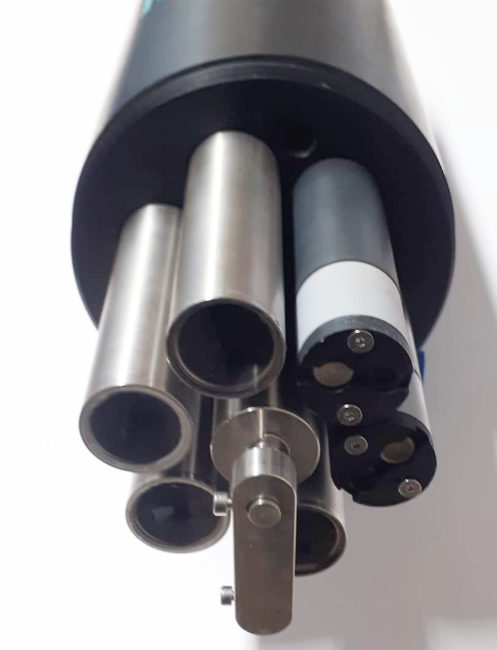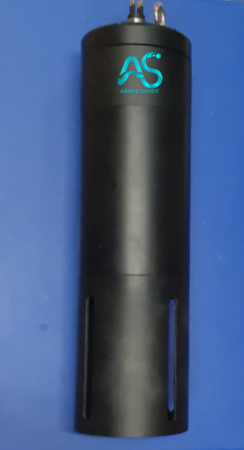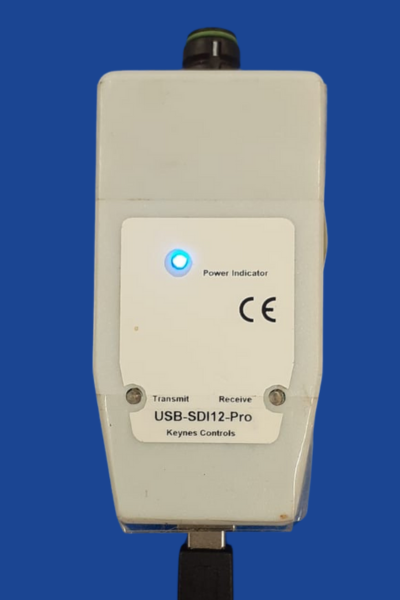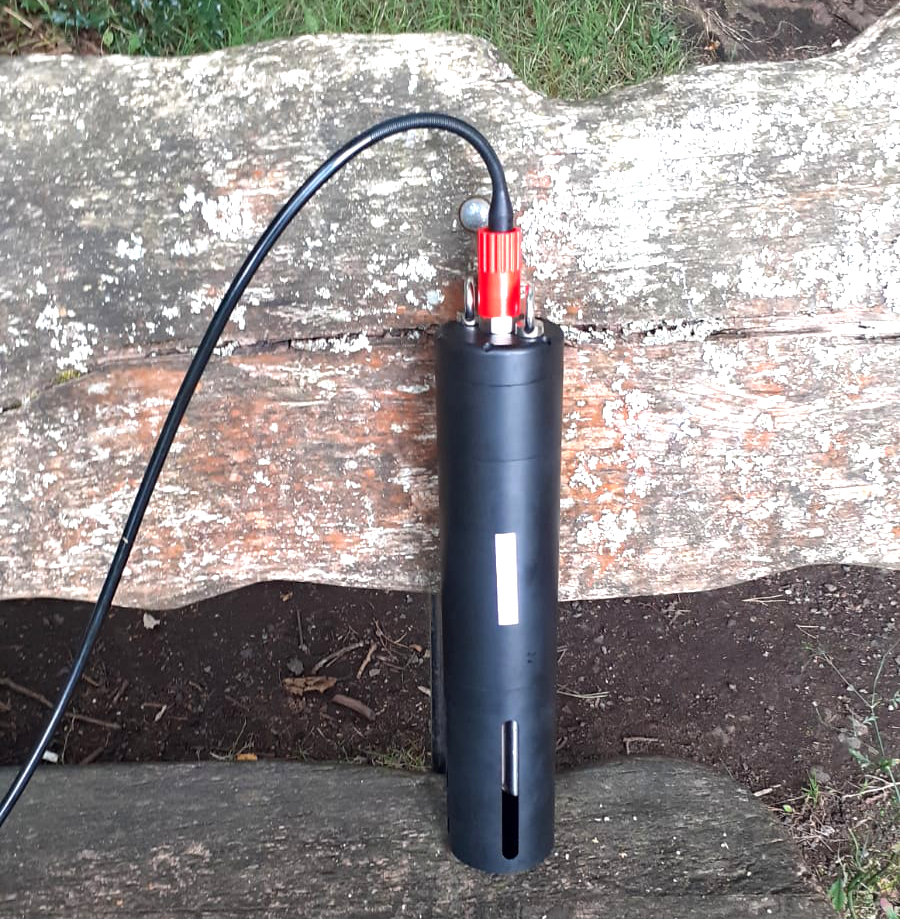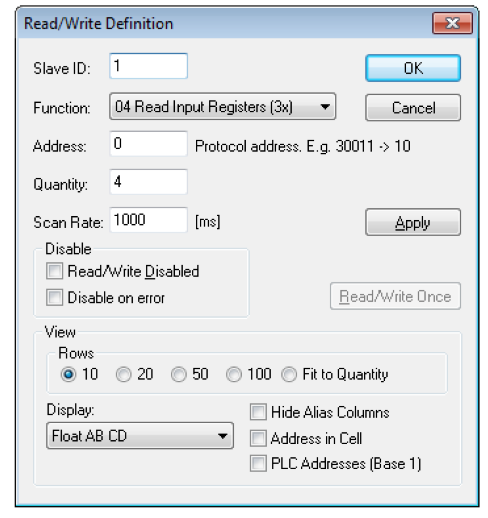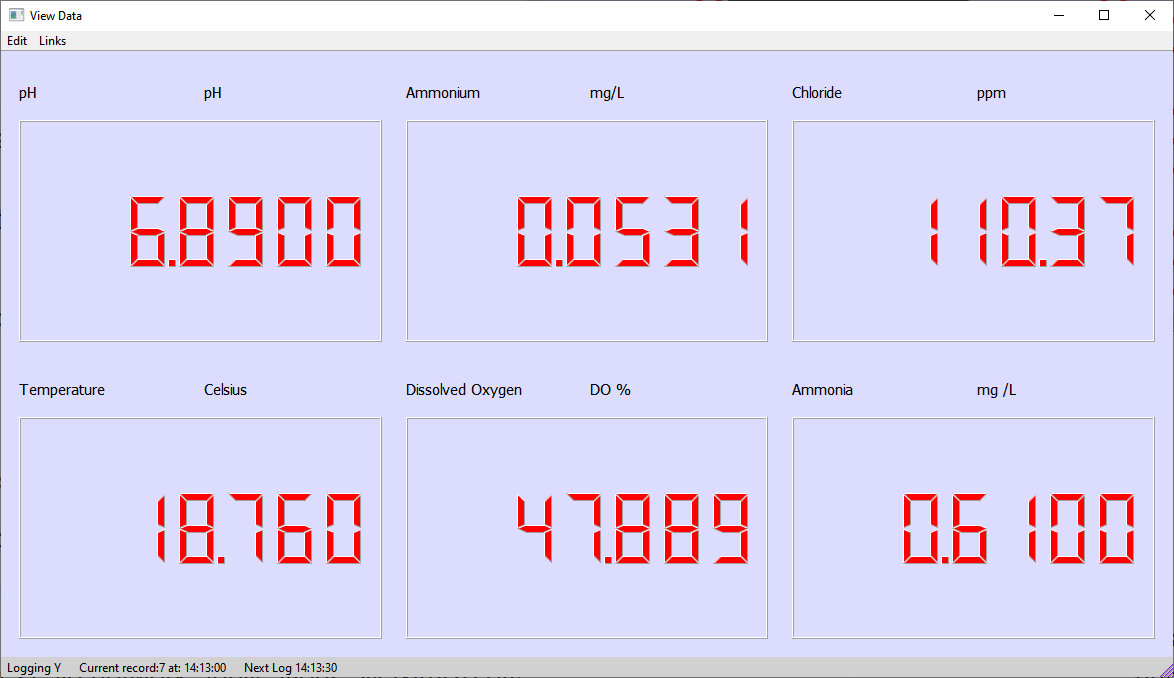The Intelligent Submersible Potassium Sensor By Keynes Controls is a submersible sensor that has been designed to simplify the acquisition of water quality measurement parameters into any platform that supports real-time reporting, data logging operations.
The ARGES Potassium Sensor can be used as a stand-alone sensor, or as part of a multi-parameter sensor array. All of the ARGES range of chemical sensors can be combined with the other Keynes Controls sensor interfaces using the same common User interface.
The ARGES Potassium Sensor by Keynes Controls directly supports SDI12, RS485 and MODBUS digital networks.
Why test for Potassium in water sources
The measurement of ammonia is critically important in applications such as wastewater, where treatment plants are required to provide a laboratory measurement of ammonia concentration.
Ammonia levels higher than around 0.9 mg/l are a good indicator of a polluted water source. Ammonia is commonly used in the manufacture of animal feed, and in the manufacture of plastics. Run-off from agricultural applications is a common source of pollution.
Measurement Integrity
All of the ARGEs sensor range have the serial numbers and the last calibration date stored internally. The user can access this information for reporting purposes. The sensors can be redeployed at any time with the calibration and serial number records are retained in the sensor.
Sensor Isolation between Measurements
The sensor element of the Ammonia Sensor is isolated when not to required for any measurements. This prevents contamination of the sensor element and maintains the long active life of the device.
When no measurement is being made the sensor is in low power mode.
AMMONIA - AMMONIUM
Both Ammonia and Ammonium compounds contain Nitrogen and Hydrogen. Ammonium contains 4 Hydrogen and 1 Nitrogen and Ammonia 3 Hydrogen and 1 Nitrogen, as a result Ammonia smells pungently and Ammonium very little small.
Together, the two forms of ammonia are called TAN which means Total Ammonia Nitrogen.
Agricultural & Industrial Runoff
Highly-concentrated levels of ammonia in local water ways can also be detected where there are elevated levels of animal waste nearby, for example, where intensive animal farming occurs or local sewage treatment is not being carried out correctly.
Sources of Ammonia in water
- Municipal waste treatment outfalls
- Septic seepage
- Industrial point sources
- Agricultural and urban runoff (fertiliser)
- Manure application
- Concentrated animal feeding operations
- Aquaculture
- Landfill leachate
Additional Material:
Toxic levels of ammonia will vary and is dependent upon the water source, pH and temperature. Toxicity to aquatic life has been reported at levels between 0.50 and 20 mg/L.
Indirectly, an ammonia build-up can enhance the growth of toxic algal blooms that 'choke' a body of water, leading to the reduction of dissolved oxygen therein.
Excess levels of ammonia is a common cause of fish deaths.
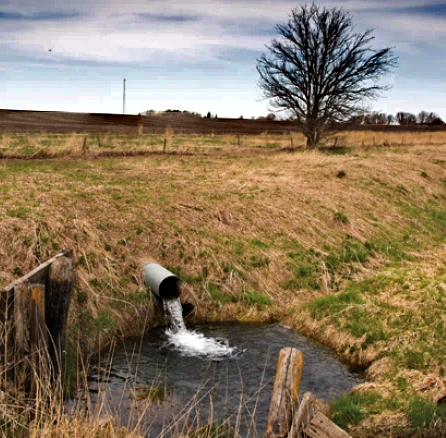
Evidence of Ammonia
- Foul Odour
- Presence of Organic waste
- Presence of organic suspended solids.
Product Features
| TYPE | RANGE (Typical levels) |
| Solid State ISE sensor. | |
| Concentration range: | 0.04 to 39000 ppm |
| Resolution: | 0.001 mg/l |
| Accuracy: | +/- 10% reading - accurate solid state sensor |
| Operation |
Stand-alone and SONDE Multi-parameter |
| Sensor life: | Approximately 6 months, depending on usage. |
| Interference IONS | Volatile Amines |
| pH Range | 4-8 |
| Protection | No membrane replacements |
| In-built Digital Communications | SDI12 / RS485 / MODBUS |
| Full Digital Operation | |
| Operating Temperature | 0-50 Deg C |
| SI Units |
ppm Degree Celsius |
Calibration Summary
The Intelligent Submersible Ammonium Sensor By Keynes Controls can be used within SONDE multi-parameter housing, or as a stand-alone sensor. The Ammonia sensor should calibrated before use for optimum results.
Keynes Controls offer a calibration kit for The Intelligent Ammonia Sensor and this is available from the online store.
The ARGES Ammonium is typically calibrated at 2 points. . The overall accuracy of the sensor will depend upon how well the ARGES Ammonium sensor has calibrated. The sensor by default uses a 2 point calibration procedure. Distilled water is used as the zero point, and a high point is set using one of the standard calibration solutions.. The ARGES Ammonium / Ammonia sensor supports additional calibration points.
For best results the calibration should be done at the temperature that the sensor will be deployed. Calibration is undertaken in collaboration with a pH and temperature sensor.
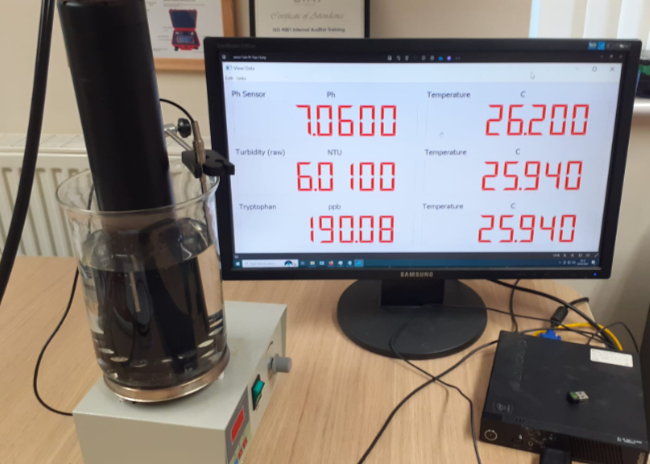
Storage and Handling
When not in use the ARGES Ammonia Sensor By Keynes Controls head should be kept hydrated with the protective cap attached.
Storage temperature range : 2 - 60 Degrees Celsius.
Further Information:
Guidelines for drinking-water quality, WHO 1996.
Natural level in ground water is usually below 0.2 mg/L.
Higher natural levels are found is strata rich in humic substances or iron or in forests.
Surface water may contain up to 12 mg/L in drinking water as a result of disinfection with chloramines
Product Specifications
| Network Type | ENVIRONMENTAL CHARACTERISTICS | |||
| SDI12 v 1.4 | 0-9- Extended address support | Temperature Range: 0 to 60 Degree Celsius | ||
| RS485 1200 B | 0-32 Extended address support | Ambient Range: 0 - 50 Degree Celsius | ||
| MODBUS | 16 and 32 Bit Registers | Water Temperature: 0 to 50 Degree Celsius | ||
| Maximum Depth: 20 m | ||||
| Process Electrodes: | Solid State Electrodes | |||
| Interference ION | Volatile Ammonium | PHYSICAL DIMENSIONS | ||
| Material | PVC/ Stainless Steel | Length x Diameter: 22 x 220 mm | ||
| Weight: 97 g | ||||
| Settling Time |
|
Maximum Depth : 50 m | ||
| Wiper Trigger | SDI12 Command | aM! | ||
| Built-in Network Types: | ||||
| Excitation | Galvanic | SDI12 V1.4/ RS485 / MODBUS over 485 | ||
| Housing | 316 Stainless Steel and PVC | 8 Bit 9600B | ||
| Sensor Connector | Gold Plated | Power Requirement | ||
| Voltage Range: 10-18 V DC | ||||
| Data Output | ppm / mg/L and Deg C | Standby Current: 1 mA Typical | ||
| Reading: 10 mA Typical |
Please Note: The Potassium sensors are pre-calibrated at the factory.
Commonly used with: pH, Turbidity, Dissolved Oxygen
The Ammonia Sensor by Keynes Controls monitors the levels of Ammonia in water. The ARGES Ammonia Sensor readings can be affected by changes in temperature and salinity. This sensor is frequently paired with: pH, Turbidity, Tryptophan and Conductivity sensors and other temperature sensors crafted and produced by Keynes Controls.
Turbidity Sensor =The ARGES Turbidity sensor by Keynes Control is a single-channel instrument that can detect and report turbidity levels in the range of 0.5 - 1500 NTU. Read More...
Submersible pH Sensor = The Intelligent Submersible pH Sensor by Keynes Controls, is a high performance submersible sensor that has been designed to simplify the acquisition of water quality measurement parameters, Ammonia concentration and toxicity increases as pH increases, although less ammonia is required to produce toxic effects at lower pH.
Temperature Effects on Dissolved Ammonia in water.
The Toxicity of ammonia (as total ammonia) increases as temperature increases,
Dissolved Oxygen
Oxygen is consumed as ammonia is oxidised (nitrification), and low oxygen levels increase ammonia levels by inhibiting nitrification. The ARGES Dissolved Oxygen sensor is used to monitor the oxygen levels in river water.
Optional Accessories
Keynes Controls manufactures a range of accessories that can be used to connect the ARGES range of sensors to a Windows computer system and enable the sensors to be used in Laboratory applications, multiparameter instruments and calibration operations. There are currently 3-Port and 7-Port multiparameter housings available. Each multiparameter housing can be used with any combination of ARGES chemical sensors.
The optional USB SDI12 media converter can be used to connect The ARGES Ammonia Sensor by Keynes Controls, or a multi-parameter instrument containing the Ammonia Sensor to a Windows PC. The media converter can power the instruments directly from a PC USB port. Status LED indicators show when the instruments are making measurements.
Free applications software enables measurements to made and results displayed. The QLOG software can be used to adjust the instrument configuration.
Multiparameter Housings - SONDE
The ARGES Potassium Sensor supports SDI12, RS485 and MODBUS digital communications as standard enabling it to be directly connected to data loggers for remote web based reporting, onto Wi-Fi and Local Area Networks using the RS485 option. The MODBUS and RS485 option are often used to connect sensors to a PLC Controller and Display Units.
Any combination of the ARGES sensors can be installed into 3-Sensor and 7-sensor SONDE multi-parameter housings.
The Potassium sensor can be grouped with any of the other ARGES chemical sensor inside a multiparameter SONDE housing.
Built-in Communication Options

MODBUS Operations
ALL of the ARGES range of chemical sensors support MODBUS network operations The sensors act as a slave unit only and can communicate to suitable controllers and SCADA systems that support the MODBUS Protocol. The sensors support 16 and 32 bit registers. .
The ARGES sensors can be connected to a PC based system using the optional USB-485-Pro media converter. This device can power the chemical sensor and supports the correct timing protocols for data transmission for MODBUS and standard RS485 network communications
Settings
9600B 8 Data Even Parity 1 Stop
The ARGES Ammonia Sensor is integrated into the Keynes Controls Q-LOG software.
Our Q-LOG software runs on the widely recognized Windows Operating system, you have the ability to calibrate, adjust instrument network address, and effortlessly display measurements on a series of panel meters and charts. Conveniently store results in text based files for quick analysis in spreadsheets.
Our highly chemical sensors provide chemical concentration and local temperature readings in SI units (Engineering units). Customize the SI units based on your instrument's capabilities, including support for multiple units like turbidity sensors, all easily managed through the device setup.
Experience the convenience of Q-LOG, enabling you to effortlessly make and install calibration values into your instrument.
Connect our Fluorometers directly to SDI12, RS485, and MODBUS networks, leveraging the versatility of Q-LOG to acquire measurements on SDI12 and RS485 networks. SDI12 communications are perfectly suited for seamless integration with data loggers, while RS485 is ideal for larger-scale network applications. Maximize efficiency by simultaneously testing all sensors of a multi-parameter instrument prior to deployment.
For added convenience, the optional USB interface allows you to comprehensively test and validate the sensors' operations, ensuring seamless integration into your own application. Trust in the performance and accuracy of our multi-parameter systems!

